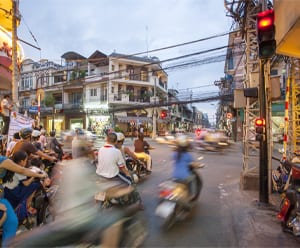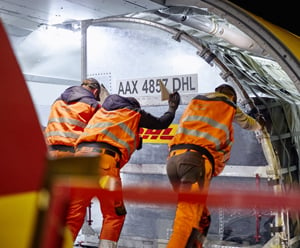歐盟企業看好東南亞國協 並期待改變的到來

歐盟(EU)對東南亞國協(ASEAN)地區的感興趣,長久以來一直是亞洲28國貿易集團協議的重心。
歐盟在雅加達成立駐ASEAN代表處之後,致力於成為該團體的策略性夥伴之一,尤其熱衷見到ASEAN經濟體的整合。
歐盟的核心利益為貿易。過去10年間,歐盟與ASEAN會員國之間的雙邊貿易倍增,在2019年達到2110億歐元。雖然歐盟專注於深化與多個會員國的雙邊關係,但其終極目標是與整個團體達成自由貿易協定。
對在ASEAN發展的歐洲企業而言,東南亞地區具有高度吸引力。但許多公司愈來愈疲於見到,ASEAN經濟體整合成單一市場的停滯。他們希望在新冠肺炎疫情過後,與東南亞國家更密切合作,並在自由貿易談判上有更大的進展。
企業觀點改變
根據歐盟與東南亞國協商業理事會(EU-ASEAN Business Council)進行的2020企業信心調查,53%歐洲企業認為,東南亞國協地區在未來5年將提供最佳經濟機遇。約73%受訪者預期將在同期,增加東南亞地區的貿易與投資活動
儘管數字反映出企業對東南亞地區的信心,但與2019年相比呈現下跌走勢。2019年調查結果顯示,63%受訪者認為東南亞國協地區是最佳機會;84%受訪者預期在當地增加貿易與投資。
值得注意的是,受到新冠疫情影響,接近半數受訪者考慮重新組織供應鏈,前往其他地區採購商品與服務。雖然東南亞國協是首選目的地,但許多受訪企業同時也選擇歐洲及中國。
對東南亞國協興趣逐漸降低的主要原因,可歸咎於ASEAN整合及歐盟與ASEAN貿易協定談判的進度遲緩。僅2%受訪者認為ASEAN經濟整合進度速度夠快,較去年的6%減少。
「調查傳達的訊息很清楚:ASEAN經濟整合似乎陷入停滯。ASEAN及其成員國必須加緊腳步達成2025年東協經濟共同體(AEC)願景」,歐盟東南亞國協商業理事會執行長Chris Humphrey表示。
不過,是否能達成2025年目標可能存在疑慮,尤其是近幾年興起的非關稅壁壘(NTBs)。例如:在第一波新冠疫情爆發之際,部分國家急忙禁止特定醫療產品與食品出口
2025年東協經濟共同體(AEC)願景
2025年東協經濟共同體(AEC)願景
東南亞國協(ASEAN)於 2015 年成立了東協經濟共同體(AEC),以允許該地區內的商品、服務、勞動力、資本和投資自由流動。 2025年東協經濟共同體(AEC)願景為AEC經濟體成員所做的2025年前規劃。
南洋理工大學拉惹勒南國際研究學院(S. Rajaratnam School of International Studies)助理教授Kaewkamol Pitakdumrongkit博士指出,這些保護措施就像膝反射,幾乎已經觸發所有反應。然而教授坦言,當部分國家經歷或面臨新一波疫情時,仍然籠罩著不確定性。
「如果東南亞地區新冠疫情惡化,政府將承受更多壓力,可能因此推動更多非關稅壁壘」,她說
貿易協定可能增添新動力
除了希望ASEAN做更多之外,絕大多數的受訪者(98%)希望,歐盟能加速與ASEAN及其會員國的貿易協定談判。
截至目前為止,歐盟只與個別會員國進行自由貿易協定(FTAs)談判,歐盟已和新加坡及越南簽署協定,目前正與印尼、泰國及菲律賓進行談判。
大部分歐盟企業(81%)相信,歐盟與東南亞國協的貿易集團,會比雙邊協定更有利。逾70%受訪者認為,歐盟在達成雙邊協議之前,應該先追求區域與區域的協定。
不過,歐盟駐ASEAN代表Igor Driesmans表示,歐盟與東南亞國協的協定不可能在短期內達成。
區域間協議面臨多項挑戰。「在技術方面,談判進度不可能非常快」,Pitakdumrongkit博士表示。「這是因為東南亞國協與設有歐盟執委會的歐盟不同,它沒有代表所有會員國進行談判的法定單位。」
再來是EU-ASEAN協議應該採用哪種架構:歐盟-越南自由貿易協定(EU-Vietnam FTA)或歐盟-新加坡自由貿易協定(EU-Singapore FTA);或是從無到有的新架構。
凌駕貿易協定之上的機會
但兩區域之間的貿易機會不只是自由貿易協定。
多方採購的趨勢正在成長 — 與不同供應商組成的團體合作 — 預期能加速歐盟企業在ASEAN的貿易與投資。根據DHL最新物流趨勢雷達(Logistics Trend Radar),疫情下艱難的營運環境,已經讓許多企業對多方採購策略更感興趣,進而促進彈性供應鏈與恢復力。
當企業尋求中國以外的多元化供應鏈之際,東南亞地區通常是自然而然的選擇,因為地理上鄰近中國,而且在越南、泰國及馬來西亞領軍下,逐漸發展成製造中心。
最近推出的東協海關過境系統(ASEAN Customs Transit System;ACTS)也可能促進東南亞地區的貿易。此數位化系統可瀏覽所有會員國的報關程序;系統在2020年初進入試行階段,預期於同一年度全面實施。
「自由貿易與開放邊境是促進經濟進步的關鍵。類似東協海關過境系統(ACTS)的整合與無縫式通關架構,能協調不同會員國之間的跨國管理流程與標準。」,DHL全球承攬事業部東南亞國協與南亞地區陸運與多元模型負責人Bruno Selmoni表示。Selmoni解釋,隨著時間經過,ACTS的全面實施也能降低成本,並且提高區域內公路運輸移動的效率與增加可靠性。
東協海關過境系統將補充ASEAN貿易促進系統—東協單一窗口(ASEAN Single Window)的不足。
東協單一窗口也是數位平台,能促進ASEAN會員國之間貿易、商業及運輸資料的交換,加速通關及放寬貿易限制。在適當經濟環境助長下,EU-ASEAN夥伴關係的開花結果指日可期。










 繁體中文(台灣)
繁體中文(台灣)